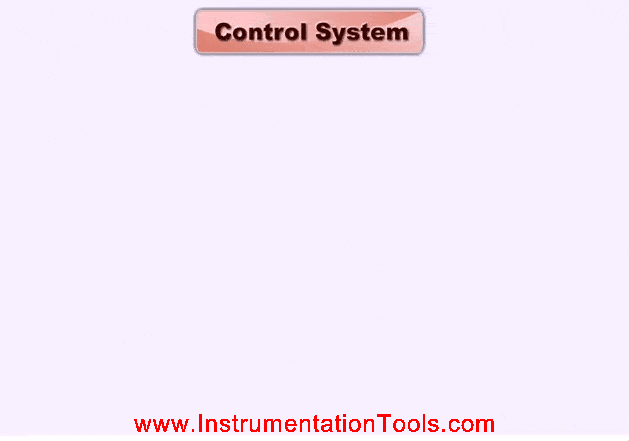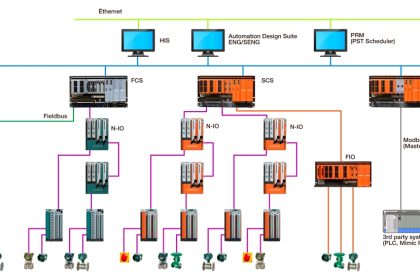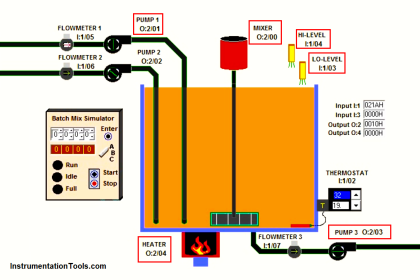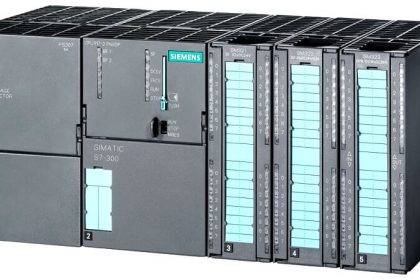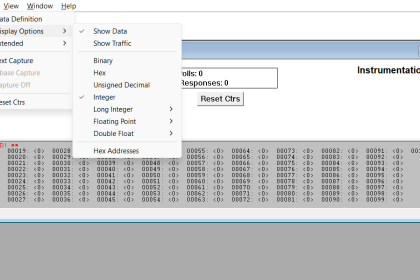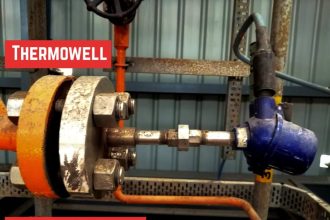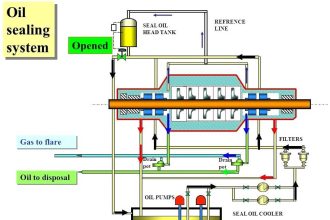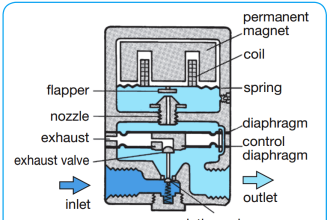Fieldbus protocols form the backbone of industrial communication systems, allowing for effective interaction between various devices in automated processes. From the early and simple Modbus protocol, which became a widespread standard due to its simplicity and ease of use, to the high-performance and high-speed Profibus designed for complex communication tasks, the diversity of these systems is vast.
DeviceNet focuses on vendor-neutral communication between devices, while EtherCAT, an Ethernet-based system, is renowned for its speed and real-time capabilities. Ethernet/IP layers the Common Industrial Protocol over Ethernet to provide robust, high-speed communication, and the Control Area Network (CAN) serves as a robust, low-cost serial bus protocol allowing for efficient microcontroller communication.
Fieldbus Protocols
Each of these fieldbus protocols serves different needs and finds applications in various industrial sectors, ensuring the smooth operation of our increasingly automated world.
| Fieldbus Protocol | Speed | Max Distance | Max Nodes | Topology | Use Cases |
|---|---|---|---|---|---|
| Modbus | 31.25 kbit/s to 1 Mbit/s (RS485) | 1.2 km (RS485), Depends on media (TCP/IP) | 247 (RS485), 253 (TCP/IP) | 100 m to 9.6 km (depending on speed) | Wide range of industrial control systems |
| Profibus | 9.6 kbit/s to 12 Mbit/s | 100 m to 9.6 km (depends on speed) | 127 | Tree, Star | Factory automation, process automation |
| DeviceNet | 125 kbit/s to 500 kbit/s | 500 m (at 125 kbit/s) | 64 | Trunk/Drop | Automotive industry, industrial automation |
| EtherCAT | 100 Mbit/s | 100 m (between devices) | 65535 | Line | Real-time industrial control systems |
| Ethernet/IP | 10 Mbit/s to 1 Gbit/s | 100 m (Copper Ethernet), up to 40 km (Fiber Optic) | Unlimited | Star, Tree, Line | Various automation and process control applications |
| CAN (Control Area Network) | 50 kbit/s to 1 Mbit/s | 40 m (at 1 Mbit/s) to 1 km (at 50 kbit/s) | 127 | Bus, Star | Automotive, Industrial control systems |
| Profinet | 100 Mbit/s to 1 Gbit/s | 100 m (Copper Ethernet), up to 40 km (Fiber Optic) | Unlimited | Line, Star, Ring | Industrial automation, process control |
| AS-Interface (AS-i) | 167 kbit/s | 100 m (extendable with repeaters) | 62 | Line, Tree, Star | Simple or binary devices, e.g. switches, sensors |
| CC-Link | 10 Mbit/s | 100 m (extendable to 1.2 km with repeaters) | 64 | Line, Star, Ring | Mitsubishi PLCs, Asian markets |
| Foundation Fieldbus H1 | 31.25 kbit/s | 1900 m | 32 | Bus, Star, Tree | Process automation, intelligent devices |
| SERCOS III | 100 Mbit/s | 100 m (Copper Ethernet), up to 80 km (Fiber Optic) | 511 | Ring | Servo drives, Machine tools |
| POWERLINK | 100 Mbit/s | 100 m (Copper Ethernet), up to 40 km (Fiber Optic) | 240 | Line, Ring | Real-time I/O, drives |
| Modbus-Plus | 1 Mbit/s | 1.6 km | 64 | Peer to Peer | Modicon PLCs |
1. Modbus
One of the oldest and simplest protocols, Modbus was developed in 1979 for industrial automation systems and especially for PLCs (Programmable Logic Controllers). Modbus is a simple master-slave protocol that sends data over serial lines (RS-232/RS-485) and Ethernet (Modbus TCP/IP).
Modbus is widely used for connecting industrial electronic devices due to its simplicity and ease of deployment. It’s well-suited for transferring discrete/analog I/O data and registers data between control and instrumentation devices.
2. Profibus
Profibus (Process Field Bus) is a standard for fieldbus communication in automation technology, originally promoted by Siemens and now managed by Profibus & Profinet International (PI). It operates at speeds up to 12 Mbit/s.
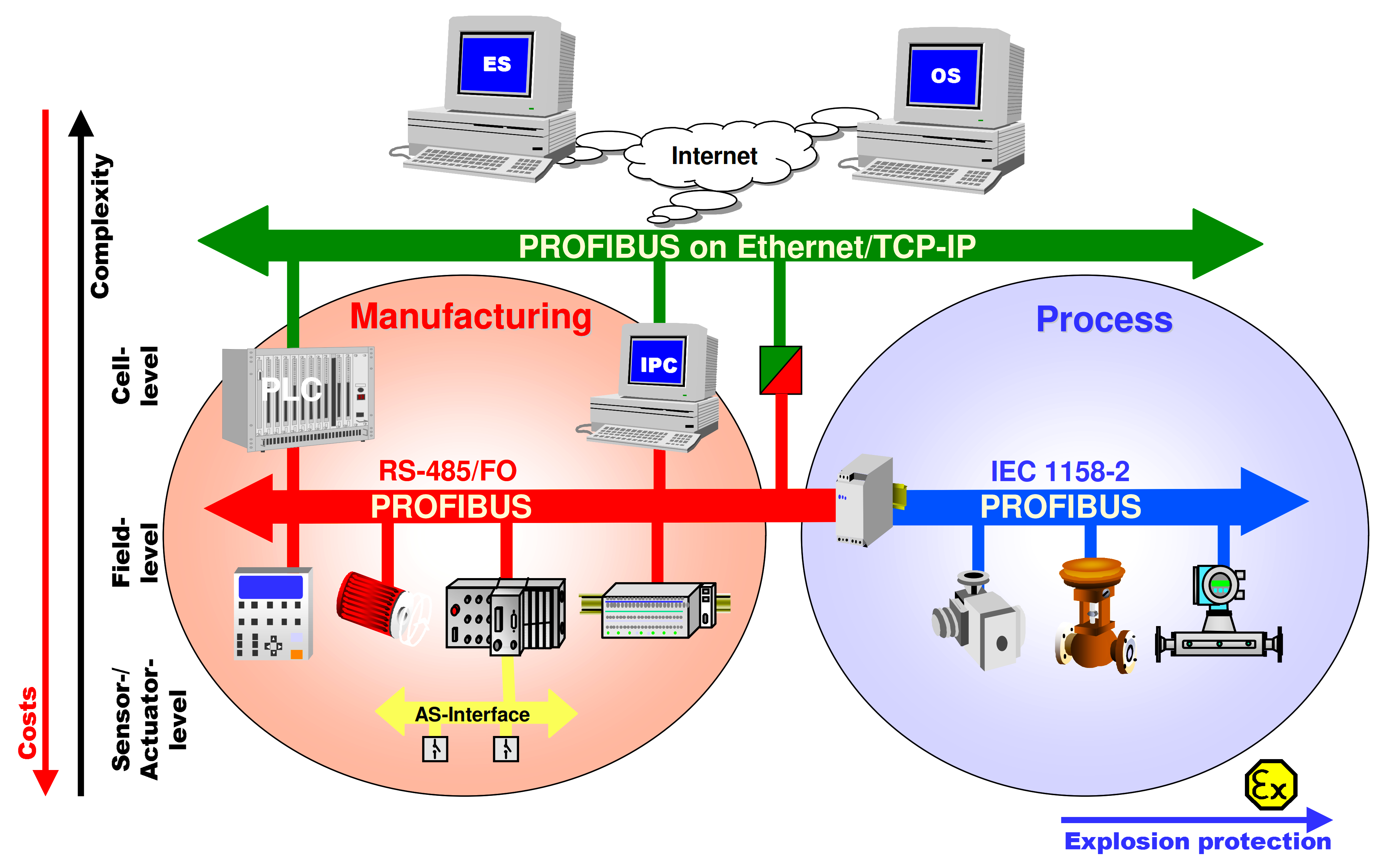
Profibus is used in various applications such as factory automation, process automation, and motion control systems. Profibus comes in two variants: Profibus-DP (Decentralized Peripherals, used for high-speed communications with field devices) and Profibus-PA (Process Automation, used in process industries for slower speed intrinsically safe applications).
3. DeviceNet
DeviceNet is a network protocol that shares common elements with the ControlNet protocol and Ethernet/IP, utilizing the Common Industrial Protocol (CIP) at a higher layer. It is maintained by ODVA and typically runs on a thick 5-pin cable which supplies both power and communication.
DeviceNet is largely used in the industrial automation environment where it simplifies the connections between devices such as sensors, actuators, and automation systems, particularly in automotive industry applications.
4. EtherCAT
EtherCAT (Ethernet for Control Automation Technology) is an open standard Ethernet-based fieldbus system. Developed by Beckhoff Automation, EtherCAT offers real-time capability and flexible topology options.
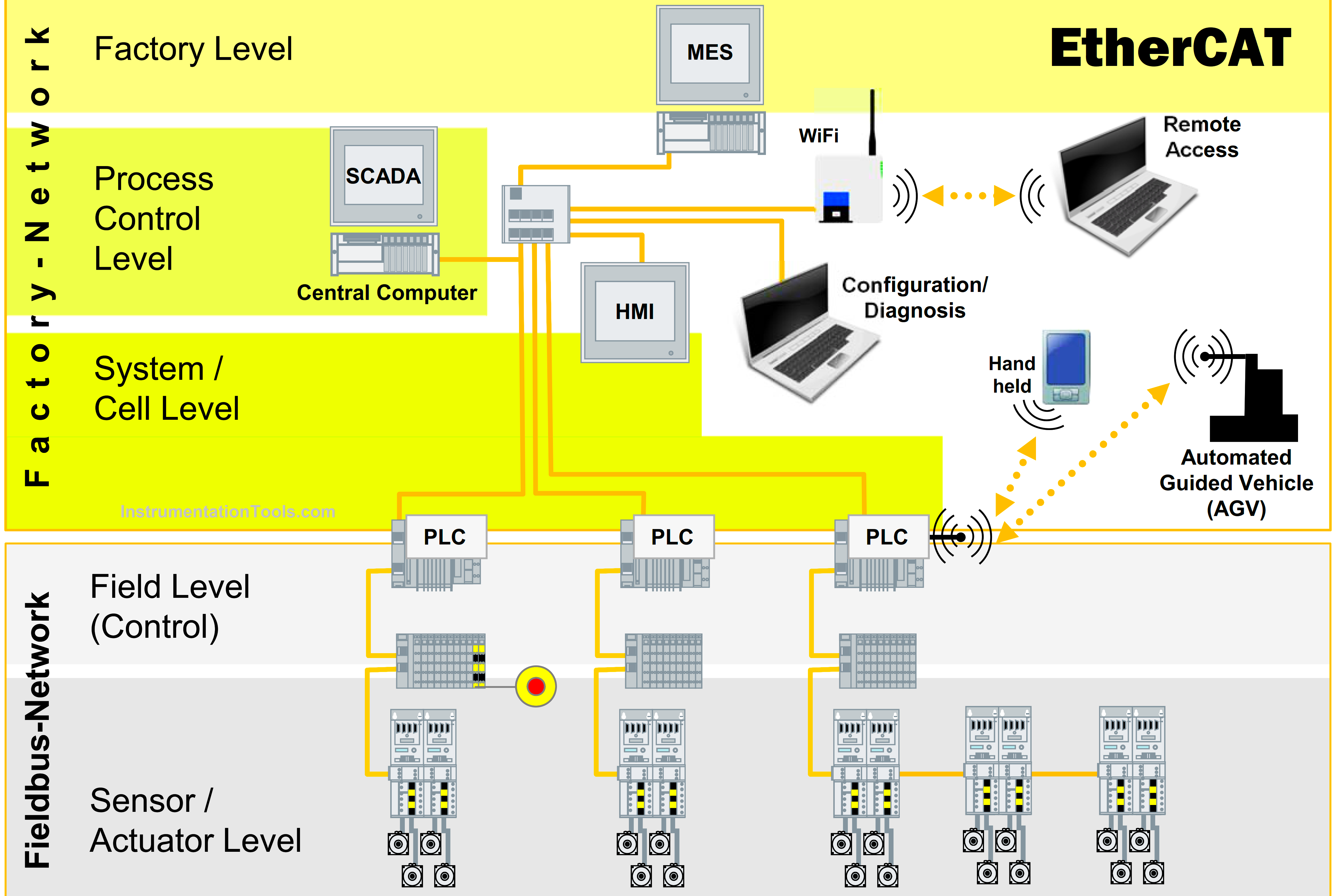
EtherCAT is often used in robotics, semiconductor devices, and automation where high-speed, deterministic control is required. Its ability to process “on the fly” (data is processed as it’s being received) makes it very fast and suitable for applications with real-time requirements.
5. Ethernet/IP
Ethernet/IP (Industrial Protocol) is an industrial network protocol that uses the Common Industrial Protocol over Ethernet. It’s managed by ODVA and uses both of the most widely deployed collections of Ethernet standards – the Internet Protocol suite and IEEE 802.3 – to define the features and functions for its transport, network, data link, and physical layers.
Ethernet/IP is used in a variety of industrial and automation applications including DCS (Distributed Control Systems), drives control, and in safety devices.
6. CAN (Control Area Network)
CAN is a robust and low-cost serial bus protocol, Developed by Bosch, that allows microcontrollers to communicate with each other without a host computer. It’s especially popular in automotive applications but also used in other areas like industrial automation and medical equipment.
CAN bus is largely used in the automotive industry for communication between devices (like engine management systems, active suspension, ABS, gear control, lighting control, air conditioning, airbags, and central locking) within vehicles without a host computer.
7. Profinet
Profinet (Process Field Net) is an industry technical standard for data communication over Industrial Ethernet. It is designed for collecting data from and controlling, equipment in industrial systems, with a particular strength in delivering data under tight time constraints.
Like Profibus, Profinet is used in various applications such as factory automation, process automation, and motion control systems. Profinet comes in three variants: Profinet CBA (Component Based Automation, used for modular machine designs), Profinet IRT (Isochronous Real Time, used for motion control applications), and Profinet RT (Real Time, used for standard data transfer).
8. AS-Interface (AS-i)
Actuator Sensor Interface (AS-i) is a networking solution used in PLC, DCS, and PC-based automation systems. It is designed for connecting simple field I/O devices (e.g., binary ON/OFF devices such as actuators, sensors, rotary encoders, analog inputs, and outputs, push buttons, and valve position sensors) in discrete manufacturing and process applications using a single two-conductor cable.
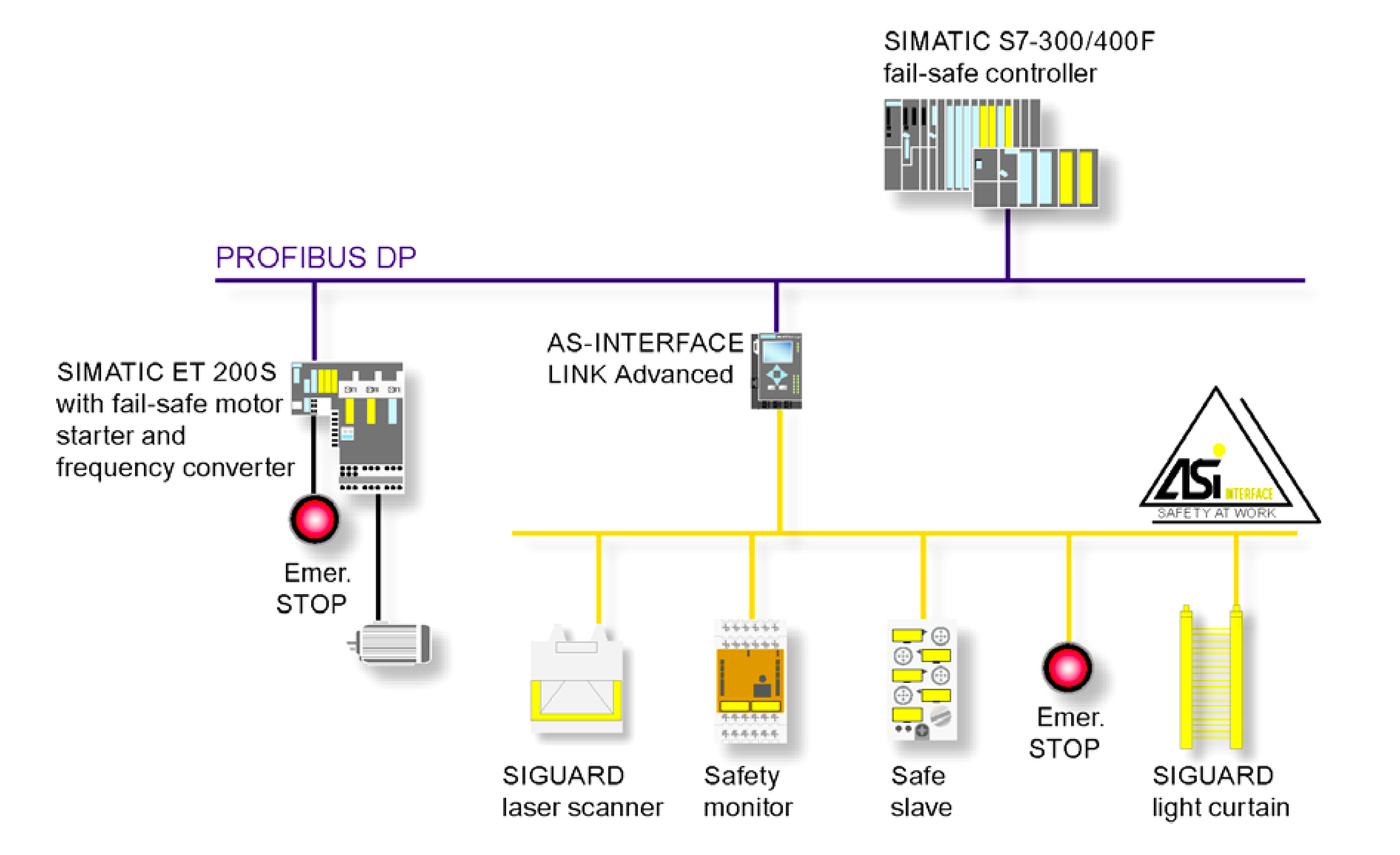
AS-i is commonly used in manufacturing, process control, and building automation settings. It’s simplicity and lower cost make it an excellent choice for basic digital I/O operations, particularly where a large number of I/O points need to be networked.
9. CC-Link
CC-Link is a high-speed field network that can efficiently link a large number of devices. It was developed in Asia and it is popular there. It integrates both discrete and process control into one network and allows for both cyclic and transient communications.
CC-Link is frequently used in Mitsubishi automation products and has a large installed base in Asia. Its use cases are similar to other fieldbuses, with the main application being factory automation, including networking of devices such as I/O blocks, PLCs, HMIs, and VFDs.
10. Foundation Fieldbus
Foundation Fieldbus is an all-digital, serial, two-way communication system that serves as the base-level network in a plant or factory automation environment. It is intended for use in process control systems, providing data communication and control between field devices and control systems.
Foundation Fieldbus is used extensively in process industries – oil & gas, chemical, power generation, pharmaceutical, and food & beverage, among others. Its primary advantage is the ability to communicate complex current and future data needs, including device status, diagnostics, control-in-the-field capability, and support for sophisticated device calibration and tuning.
11. SERCOS III
SERCOS III (SErial Real-time COmmunication System) is the third generation of the SERCOS interface, a standardized open digital interface for the communication between industrial controls, drives, I/O, and sensors.
SERCOS III is often used in machine tools, packaging machines, printing machines, and other similar applications where motion control is a key requirement. It provides a high degree of interoperability since it’s an open protocol used by many different vendors.
12. POWERLINK
POWERLINK is a software protocol standard created by the Ethernet POWERLINK Standardization Group (EPSG). It’s a Real-Time Ethernet fieldbus system designed for hard real-time applications, with a very low jitter of less than 1 µs.
POWERLINK is often used in applications requiring precise synchronization and determinism, including robotics, packaging machines, assembly systems, and other sophisticated industrial automation systems.
13. Modbus-Plus
Modbus-Plus (MB+) is a peer-to-peer protocol (every device can function as a master or a slave) developed by Modicon. It operates at 1 Mbit/s and is a token-passing network.
This fieldbus was designed specifically for Modicon PLCs to handle robust industrial communication needs. It is typically used in manufacturing sectors.
14. Interbus
Interbus, also known as Interbus-S, is a fieldbus system that was developed by Phoenix Contact in the 1980s. It features a cyclic data transfer process that is largely used for control and regulation tasks in the automation industry.
Interbus is used in a wide range of automation and process control applications, from automotive manufacturing to the chemical industry. It is ideal for quick data exchange between programmable logic controllers and decentralized field devices.
15. IO-Link
IO-Link is a short distance, bi-directional, digital, point-to-point, wired (or wireless), industrial communications networking standard (IEC 61131-9) used for connecting digital sensors and actuators to either a type of industrial fieldbus or a type of industrial Ethernet.
IO-Link is used for data exchange between controllers and sensors or actuators. The main uses are machine tools, manufacturing systems, production lines, and all kinds of devices that need to communicate data to a controller in a standardized and reliable way.
16. FL-net
FL-net (Factory LAN network) is an open network that is standardized as a Japanese industrial standard (JIS). It is built on Ethernet technology and designed for high-speed cyclic data transmission and event transmission.
FL-net is primarily used in Japan and other parts of Asia for data communication between PLCs from different vendors, allowing for interoperability and the exchange of data in a factory setting.
17. EtherNet/IP CIP Motion
EtherNet/IP CIP Motion is a part of EtherNet/IP that focuses on motion applications. It allows for real-time control of high-speed multi-axis applications and synchronizes motion tasks.
EtherNet/IP CIP Motion is used in automation systems requiring precise, high-speed, multi-axis motion control, such as packaging, converting, robotics, and material handling.
18. CC-Link IE
CC-Link IE (Industrial Ethernet) is a high-speed, high-performance industrial network technology that enables devices from numerous manufacturers to communicate. It offers gigabit Ethernet performance and seamless integration of field devices and controllers.
CC-Link IE is used in a variety of applications, including automotive, semiconductor, and other high-speed automation tasks.
Conclusion
The Fieldbus protocols offer more options for engineers and system integrators. The best fieldbus for your application depends on many factors, including the specific requirements of the task, cost, availability of components, and the experience of the design and maintenance team. It’s also worth considering the geographical region, as some fieldbuses are more popular in certain parts of the world.
If you liked this article, then please subscribe to our YouTube Channel for PLC and SCADA video tutorials.
You can also follow us on Facebook and Twitter to receive daily updates.
Read Next:
- Process Control Loop Testing
- How Process Control Loop Works
- Control Loop Objective Questions
- DCS Troubleshooting Valve Loop
- Feedforward and Cascade Control
